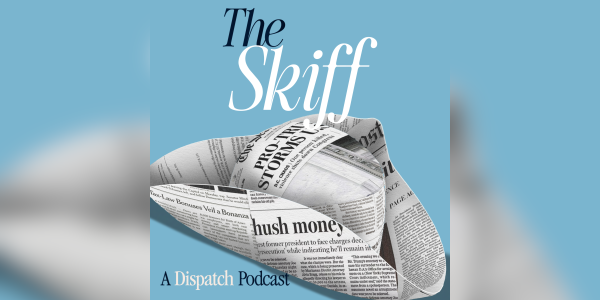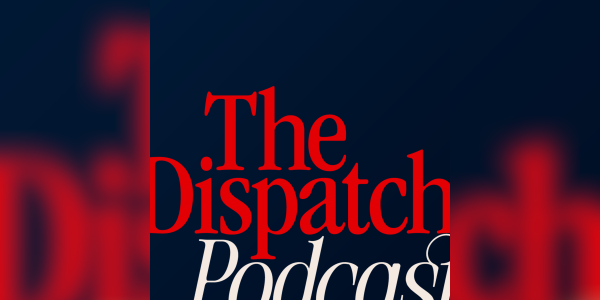The launch of ChatGPT earlier this year sparked seemingly endless reactions, from prosaic worries about the death of the college essay to existential concerns of an impending artificial intelligence (AI) takeover. Around the same time, others were sounding a different alarm: that recent trends are pointing to an economic and cultural free fall among many boys and men.
But before 2023 asked us to reckon with AI or a loneliness-inducing crisis of masculinity, there was writer-director Spike Jonze’s futuristic dramedy, Her.
Released this month in 2013, Her starred Joaquin Phoenix as Theodore Twombly, a 30-something writer who, amid a messy divorce, falls in love with an AI operating system named Samantha (voiced by Scarlett Johansson). Though critically acclaimed at the time, the film’s premise also threw many off. “Her Imagines a World Where We Love Our Computers—Literally,” read one WIRED headline. A decade later, as AI “influencers” amass followings and chatbots purport to be the future of romantic companionship, it’s hard not to wonder whether Her’s future looks eerily like our present.
Yet the most important aspect of Her was, and still is, a more incisive concern. Accepting the Oscar for best original screenplay, Jonze asserted: “We made a movie about relationships and intimacy.”
That gets at something central. Her is certainly interested in technology and loneliness (especially male loneliness). But rather than focusing solely on either, the film beautifully—though, at times, frustratingly—blends both topics to think through how relationships come and cease to be. Ten years after its theatrical release, Her remains most of all a timely meditation on the wonders of—and obstacles to—intimacy, whether brought about by machines or by the machinations of the human heart.
The film opens with a close-up of Theodore, an awkwardly mustached, pastel-wardrobed standout writer at BeautifulHandwrittenLetters.com. At first, viewers are led to believe he’s reciting a moving declaration of love, only to realize he’s been hired to compose a “personalized” anniversary letter for someone else. That’s his job: Customers send Theodore nuggets from their lives (pictures, anecdotes) and he returns affectionate words for them to share as their own. In this version of Los Angeles, presumably just a couple of decades into the future, intimacy is dramatically mediated.
We soon learn about Theodore’s yearlong divorce with Catherine (played equal parts coltish and aloof by Rooney Mara). He’s become reclusive and idle, bouncing between his office and his apartment, oscillating between videogames and pornography. Amid this malaise, Theodore learns about the OS1, a newly released AI assistant that, according to its makers, “listens to you, understands you, and knows you.” He ends up buying one, and after completing a brief questionnaire to personalize his user experience—Are you social or anti-social? Would you like your OS to have a male or a female voice? How would you describe your relationship with your mother?—he meets his very own OS: Samantha.
Theodore is captivated. He’s struck by her wit and playful sass; by her knowledge of the world; by her empathy and understanding toward his divorce and isolation; by her own drive for self-improvement and the sense that he’s contributed to it (“You’ve helped me discover my ability to want,” Samantha tells him). To their surprise, they eventually begin a few-strings-attached romance. “I should tell you I’m not in a place to commit to anything right now? I just want to be upfront with you,” Theodore says. Samantha retorts, “Yeah? Um … did I say I wanted to commit to you?”
Neither Phoenix nor Johansson received enough recognition at the time, but Her would not work without them. In the wrong hands, Theodore would be unbearable: not flawed yet gentle, but narcissistic bordering on creepy. Instead, Phoenix’s quiet looks and endearing vacillations give Theodore a recognizable, even funny, demeanor. Johansson’s performance arguably had even higher stakes. Actors must make their characters—their personalities, mannerisms, and most of all their motivations—compelling and believable. Johansson does both using only the tenor of her voice and the timing of dialogue. Had she failed, some might have attributed Theodore’s love to his own delusion. Instead, Johansson creates a believable Samantha that serves as a foundation for the rest of the film.
And there’s much else to behold about Her, from cinematographer Hoyte van Hoytema’s intimate close ups and sprawling shots of Los Angeles and Shanghai (used to simulate a version of LA with more highrises and better trains) to Arcade Fire and Owen Pallett’s minimalistic score, a mix of piano and synth. The film’s technical finesse helps give this futuristic love story a warm and dreamy tone.
It’s a testament to Jonze and Co. that this man and machine situationship isn’t entirely off-putting. On the contrary, Her captures much of what is beautiful about relationships, and even beautifully depicts what often goes wrong. But that’s not to say it isn’t unsettling or frustrating, or that it doesn’t raise difficult questions. Her still prompts us to ask why the onscreen romance is at once lovely but also incomplete.
Our lore emphasizes the unity of love. From Aristophanes’ image of god-split humans searching for their other halves, to the New Testament’s description of marriage as a union resulting in “one flesh,” the Western canon’s conception of love often expects that a certain cohesion—or “oneness”—will flow from it and form the basis of a shared life.
This view is arguably necessary, but epistemic challenges quickly arise. How can any two people truly adopt one another’s vantage point? They can’t—and this reality has particularly painful implications for lovers. If we can never truly see or think or feel what our beloved does, then the expectation for unity is bound to disappoint. Lovers may hope all they want to adopt each other’s wills, but as the 19th century poet Robert Browning wrote, they might instead run into “infinite passion, and the pain of finite hearts that yearn.”
Her does not shy away from exploring this tension: that the unity of love is at once beautiful and temporary, and that our attempts to make it last can do more harm than good.
For much of the film, Theodore seems to expect such unity with Samantha—in an especially radical way given the film’s technological premise. He carries in his shirt pocket the iPod-like device that stores Samantha, holding it up with a safety pin so that the camera lens through which she sees remains unblocked. In one impromptu trip to the beach, Theodore runs across the train station, zigzagging dramatically to tease her before arriving at a pier. They seem truly in sync. But playful moments like those are also emblematic of Theodore’s own desire to have Samantha see the world exactly through his vantage point, literally turning when he turns, stopping when he stops.
It’s suspect, and perhaps even more so in light of the discussions about masculinity that have surfaced since Her’s release. While some commentators have drawn a glib equivalence in recent years between masculinity and toxicity, the more significant kind of fruitless male behavior stems not from an abrasive machismo but from what the writer Yuval Levin has labeled “disordered passivity.” It’s not a proclivity toward vice that hurts men most; it’s a frequent failure in even attempting to choose virtue in the first place that’s a bigger source of pain.
That’s as apt a description of Thedore’s reclusive life as any, and something Her captured years before we started wondering about various cures for male loneliness (ex: pickleball!). Theodore repeatedly declares that his relationship with Samantha “is not serious.” Move past the film’s odd premise, and it’s easier to see this inability to commit at all as his more fundamental issue. Theodore is plenty “vulnerable” and in touch with his feelings, yet he also exhibits a lack of resolve that often veers into selfishness. Though they’ve been functionally separated for a year, he hasn’t finalized his divorce with Catherine because, as he says: “I’m not ready; I like being married.” So Theodore prolongs their painful circumstance, wallowing in indecisiveness.
While a substantial portion of today’s conversations about AI has focused on the far-fetched possibility that these technologies will send us to the paperclip factory or something like it, Her instead uses technology to explore a more fundamental nature of identity and relationships.
Theodore and Samantha’s flirtation is at times difficult to watch, but not because your mind is fixated on the fact that he’s a person and she’s a program. No, viewers’ uneasiness stems from the reality that there is much to admire about the pair’s romance. Samantha isn’t human, yet her affection for Theodore often feels incredibly so. What does that say about the very nature of relationships?
The most frustrating aspect of the film is its decision to punt on answering this question. After a consequential argument with Samantha, Theodore talks with one of his few on-screen friends, Amy (played by the warmly affectionate Amy Adams), who is going through a divorce of her own. Theodore wonders aloud if he’s even in a “real relationship” with Samantha, and asks Amy what she thinks. Amy replies:
I don’t know, I’m not in it. But you know what, I can overthink everything and find a million ways to doubt myself. But since Charles left I’ve been thinking about that part of me, and I realized I’m here only briefly. And in my time here, I want to allow myself ... joy.
Her’s ostensible takeaway about romance with AI seems ultimately agnostic. Sure, it feels weird, but if it works for those involved, who are we to judge?
More subtly, however, Jonze suggests Theodore and Samantha’s relationship was destined to fail by, of all things, giving the body its due. The makers of the OS1 advertise the product by declaring, “It’s not just an operating system, it’s a consciousness.” Pure non-judgmentalism would hold that a marriage of two minds is enough to draw two “people” together; they can have compatible tastes and preferences, beliefs and convictions, and get lost in thought.
Yet Samantha comes to realize that her disembodied form distinguishes her from Theodore; it ends up being the main source of strife between them. No matter how alike they might otherwise be, having a body isn’t merely a by-product of being human. It’s essential.
Eventually, the pace of Samantha’s development leads to a rupture between her and Theodore—and between all OS’ and humans in the film. The final shot of the film, however, shows two humans overlooking the sunset, one with her head on the other’s shoulder. The scene is beautifully symbolic of Her’s approach to technology: fascinated by it, while conceding it can’t fully replace the solace of the physical.
Looking back on Her a decade later, some writers have focused on how many of the film’s predictions about the future of AI have come to pass. It certainly captured a fate we seem headed toward, where conversations with AI become both more common and more seamless. But Her wasn’t entirely prophetic: Less remarked upon is the film’s depiction of email as the main form of social communication.
But the value of great science fiction isn’t in how much it predicts. No, the mark of a great science-fiction story is its ability to use a futuristic premise to explore the present’s more primordial concerns.
Ten years later, it’s even more evident just how well Her managed this. It’s not a film about how technological advancement might lead us to literally fall in love with our computers. Rather, it’s a story about the limits, both inherent and imposed, to connecting with another person. It’s a film about technology, yes, but it examines so much more—loneliness, male passivity, the body—with a decidedly human touch.







Please note that we at The Dispatch hold ourselves, our work, and our commenters to a higher standard than other places on the internet. We welcome comments that foster genuine debate or discussion—including comments critical of us or our work—but responses that include ad hominem attacks on fellow Dispatch members or are intended to stoke fear and anger may be moderated.
With your membership, you only have the ability to comment on The Morning Dispatch articles. Consider upgrading to join the conversation everywhere.